This Guide to Worsted Wool is brought to you by Vitale Barberis Canonico, the largest producer of quality men’s suiting fabric in the world.
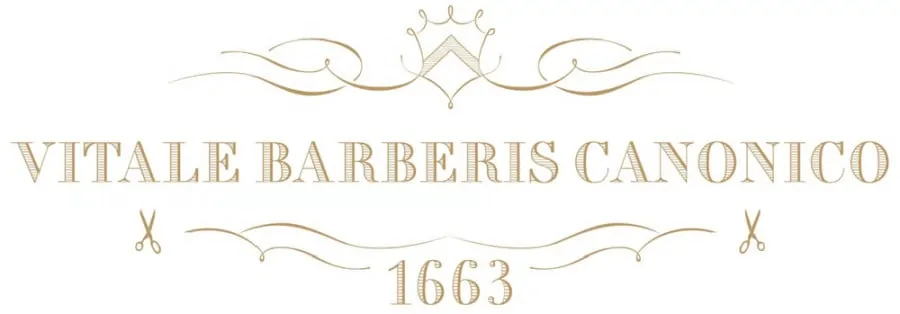
In Part I of our fabric series, we discussed woolen flannel and today the focus will be its counterpart: worsted wool. It is probably the most popular fabric for men’s suits in the world, and although many fabrics are technically worsteds, the differences in quality couldn’t be greater. The goal of the Guide to Worsted Wool is to help you understand everything about worsted wool so you can pick exactly the fabric that is right for your needs.
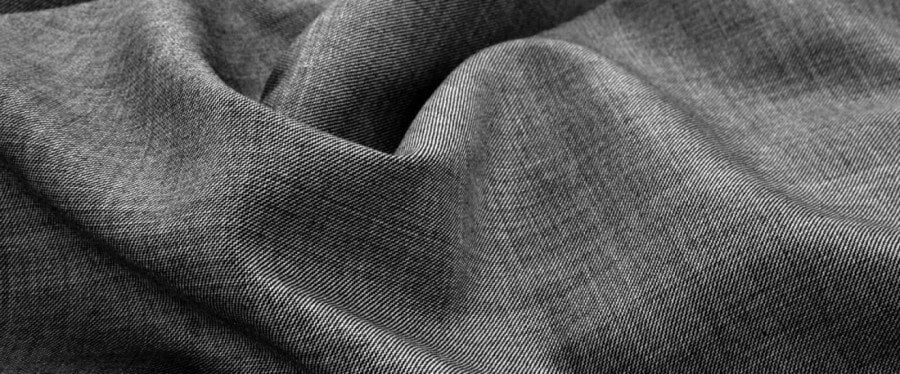
What Is Worsted?
Worsted can describe a combed yarn, a fabric woven from combed yarn or a yarn weight. As a refresher, here is the difference between combed and carded yarns:
| Combed Yarns |
|---|
| Combed yarns for menswear suitings are made of wool by rotating metal combs that align the long wool fibers while discarding the short staple fibers.The results is a long-lasting, fine and smooth yarn with a somewhat glossy finish. |
| Carded Yarns |
|---|
| Carded yarns are brushed in a way that retains the long wool fibers as well as the short ones. As a consequence, the yarn is weaker than a combed one, fuzzier and matte. |
Before the fabric can be woven, the yarn is produced from raw wool.
- With the help of rotating metal combs, all short staple wool fibers are discarded. The result is the so-called top, a semi-finished strip of long staple wool fibers
- The top is further reduced in diameter
- At this stage, it can be dyed as a whole or vigoureux printed
- Now the wool can be spun into yarn by pulling and twisting the wool. By adjusting the pull, one can get lighter or heavier yarns whereas varying the twist will impact the look and feel as well as the strength of the yarn. Tight twisting provides a crisper feel, whereas loose twisting makes for a softer, weaker yarn
- Excellent worsted yarns are made of tight crimping wool. Wool fibers are tightly crimped when the surface has many open scales, resulting in a uniform and durable yarn
- The yarn is then woven into a fabric
- Finally, the cloth is finished
Vitale Barberis Canonico is fully vertically integrated, which means they control all of the steps above as well as animal husbandry. This allows them to tightly control the quality of the raw material and every step of the fabric production.
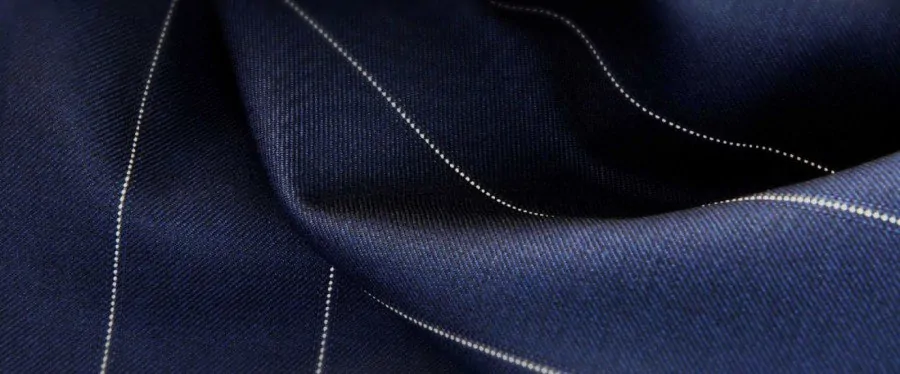
Why Is It Called Worsted?
The name’s origin goes back to the 12th century, when the English city of Worstead in Norfolk, along with a few other cities in the area, became a manufacturing center of cloth weaving.
Is Lighter Worsted Better Than Heavy? No, Not Necessarily
Analog to the megapixel race for cameras, it seems like the market constantly demands lighter and softer fabrics. While a soft fabric feels pleasant on one’s skin, a heavy overcoat made of Donegal Tweed is often preferable to a fine, lightweight cashmere overcoat in terms of look and function.
It’s important to keep in mind that a lighter fabric with a higher SUPER Number is not a hallmark of a better fabric, it just indicates that the fibers used were thinner in diameter. The SUPER Number does not provide any information about the particular weave, whether 2-ply, 3-ply or 4-ply yarns were used for warp and weft, and it also does not tell you how heavy the fabric is.
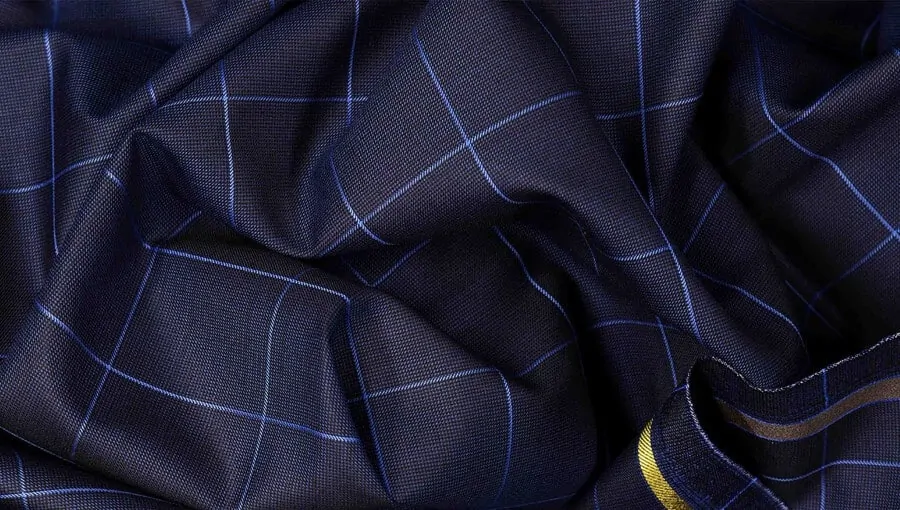
Nevertheless, fabrics today are usually lighter across the board than they were 30 or 40 years ago. Most worsteds today fall between a range of 180 – 300 grams per meter (6 – 10 oz) though for practical purposes 210 grams / 7 oz should be as low as you should go unless you are willing to compromise some of the characteristic robustness of a worsted fabric.
Lighter Fabric ≠ Cool Fabric
Most men today believe that a lighter fabric wears cooler and thus is more comfortable than a heavier fabric, but such generalizations are simply wrong. A relatively heavy, open weave fresco fabric feels much cooler and comfortable on a hot day than a tightly woven, lightweight super 150 fabric. Furthermore, the interlining and canvas of a jacket has a tremendous impact but that’s a subject for a different article.
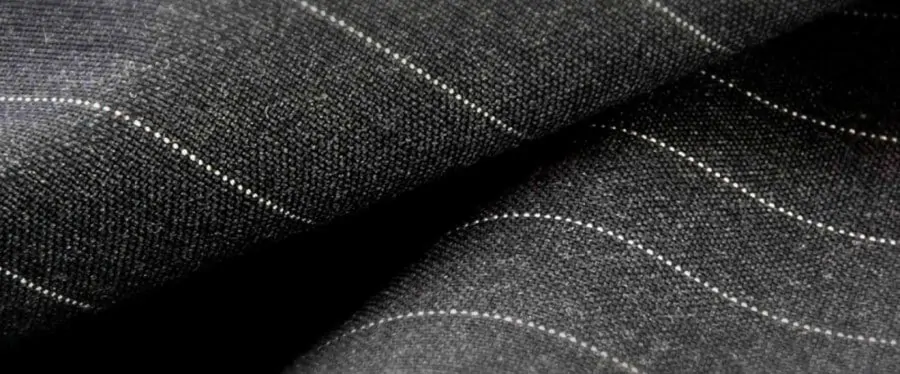
SUPER 100’s, 120’s, 150’s – The Numbers Explained
When you buy a suit or wool fabric, the chances are that you will see a SUPER Number advertised, and the higher the number, the more you are asked to pay. Unfortunately, this number does not help you to objectively compare fabric qualities across different manufacturers. To understand the meaning of the numbers, it is essential to understand the history behind it.
The Origins Of The SUPER Number
Up until the 18th-century British wool merchants would describe products with subjective terms such as Low, Medium, Fine, Super... Obviously, this was not objective enough and so wool merchants in the city of Bradford, England rated the quality of wool by estimating how many hanks could be spun by a skilled spinner from a pound of combed wool. A hank was defined as a single strand yarn of 560 yards length.
This process became known as the English Worsted Yarn Count System or Bradford System.
The finer the average diameter of a single wool fiber, the more hanks could be spun. Normal wool yielded 44 hanks, which was classified as 44’s wool. Finer wool produced 64’s and the finest wool back then reached 80’s. Thus, the super number was born, though even back then the exact count depended on the evaluator and so it was never 100% accurate.
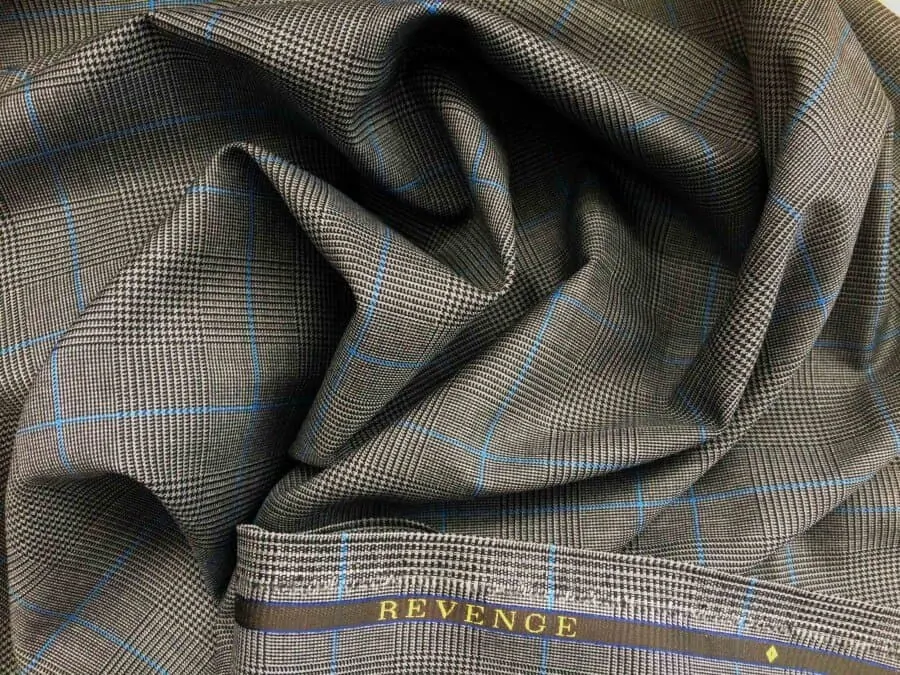
The SUPER System Gets Refined & Objective
On December 21, 1968, the U.S. Department of Agriculture issued the United States Standards for Grade Wool, which assigned ranges of average fiber diameter (AFD) and maximum standard deviation to each Bradford count. According to standards, Grade 80’s Wool had to have an average fiber diameter of 17.70 to 19.14 microns, inclusive, and a standard deviation in fiber diameter of 4.09 microns or less. Other commonly used numbers were 80s, 70s, 64s, 62s, 60s, 58s, 56s, 54s, 50s, 48s, 46s, 44s, 40s, and 36s.
SUPER Numbers Today
Through the breeding of sheep, it is possible today to get wool fibers of 14 microns and less, which is not even on the 1968 scale. Therefore, many cloth weavers and suit makers have created their own SUPER number system. As a consequence, a SUPER 200’s fabric from one company can be considerably coarser or finer than from another.
Fortunately, weavers of quality wool cloth abide by the Fabric Labelling Code of Practice by the International Wool Textile Organization (IWTO). This means you can compare SUPER numbers from Vitale Barberis Canonico with Holland & Sherry or Loro Piana, for instance.
Here are the exact definitions but bear in mind, that higher numbers don’t necessarily mean better fabric. It just indicates the fineness of the yarn diameter, but alone doesn’t indicate the quality. Naturally, the finer yarns are rarer than coarser yarns, and so quality weavers like Vitale Barberis Canonico ensure that they utilize only the best weaving and finishing techniques for their most precious fibers.
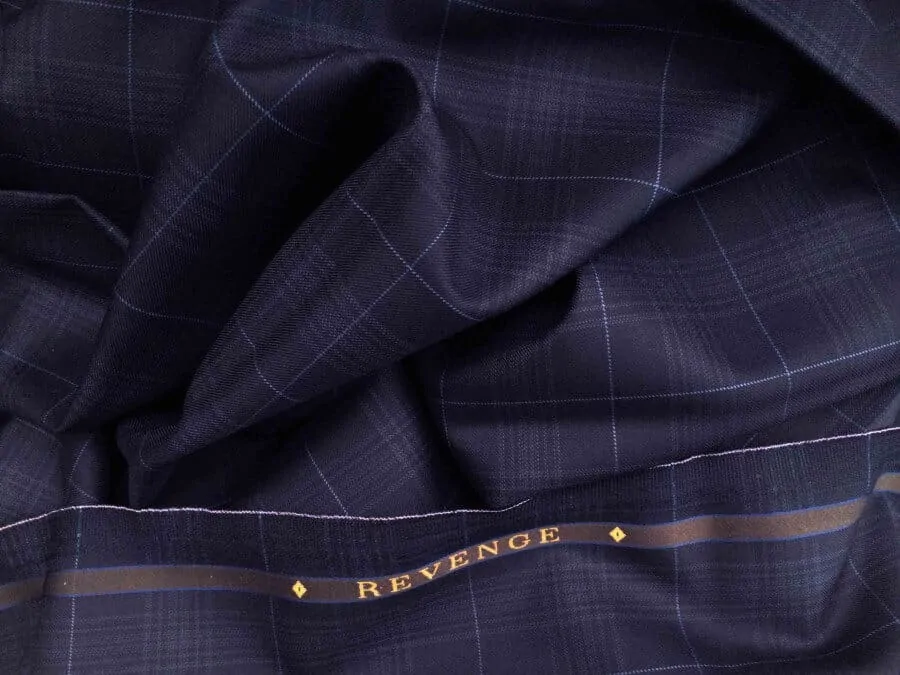
The word Super (as in SUPER 100’s, for example) can only be used to describe fabrics made from pure new wool, and the “S” value is determined by, and must comply with the Maximum Fibre Diameter values, in the table below (micron and µ are the same thing):
SUPER “S” descriptions may also be used for fabrics made from wool blends with mohair, cashmere, alpaca and silk. Sadly, the super number can also be used if elasthane was added for stretch or if up to 5% non-wool yarn was added for decorative effects.
| Super “S” Number |
|---|
| SUPER 80’s |
| SUPER 90’s |
| SUPER 100’s |
| SUPER 110’s |
| SUPER 120’s |
| SUPER 130’s |
| SUPER 140’s |
| SUPER 150’s |
| SUPER 160’s |
| SUPER 170’s |
| SUPER 180’s |
| SUPER 190’s |
| SUPER 200’s |
| SUPER 210’s |
| SUPER 220’s |
| SUPER 230’s |
| SUPER 240’s |
| SUPER 250’s |
| Maximum Fibre Diameter |
|---|
| 19.75 µ |
| 19.25 µ |
| 18.75 µ |
| 18.25 µ |
| 17.75 µ |
| 17.25 µ |
| 16.75 µ |
| 16.25 µ |
| 15.75 µ |
| 15.25 µ |
| 14.75 µ |
| 14.25 µ |
| 13.75 µ |
| 13.25 µ |
| 12.75 µ |
| 12.25 µ |
| 11.75 µ |
| 11.25 µ |
Super 100’s ≠ 100’s
Other blends than the ones mentioned above may not use the word SUPER “S” descriptions but it can be labelled as “S”. So, while a wool-cashmere blend can be called SUPER 100’s if the fiber is 18.75 µ in diameter or less, a wool-nylon blended fabric with the same fiber tickness could only be labelled as 100’s without the SUPER.
This is the case as long as the wool content is at least 45%.
Famous Worsted Patterns and Weaves
Since “worsted” only refers to the yarn that was used during the weaving process, a worsted can come in all kinds of weaves: plain weave, twill, barathea… The same is true for patterns. However, the most popular worsteds come in solid colors, stripes, Prince of Wales checks, sharkskin, needle head, and hopsack. All of these will be covered in a separate guide, so stay tuned!
ICONS By Vitale Barberis Canonico
Vitale Barberis Canonico produces a range of superb all-wool worsteds, and I would like to highlight 3 of my favorite picks from their ICONS Collection: Perennial, Revenge, and Greenhills
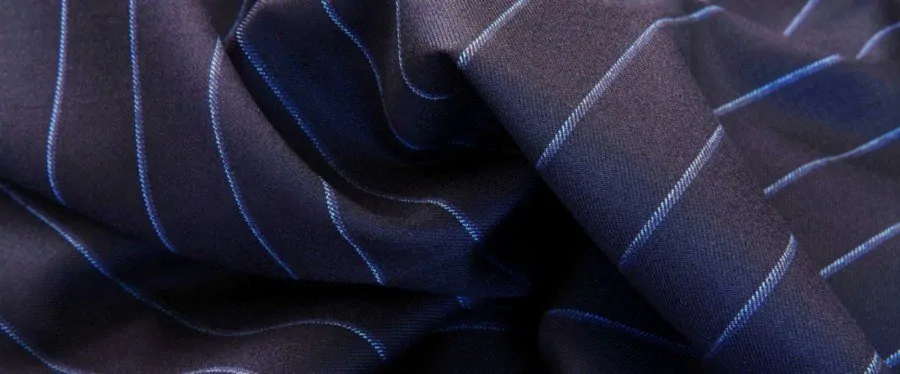
PERENNIAL – The Perfect Everyday Fabric For Business Suits
The word “perennial” refers to feeling at ease in any season and in any situation and therefore, it is the perfect name for this range of fabrics. Made of SUPER 110’s wool in 260 grams / approx. 9 oz in classic patterns, it was designed to be worn during three seasons. Paired with an unbeatable price, it’s not surprising that the PERENNIAL is VBC’s best selling range. Its key features are:
- Classic & timeless designs
- Fabrics for suits, pants, sport coats & blazers
- Hard wearing 3-season cloth that can also be worn during mild summers.
- SUPER 110’s quality with an average diameter of 18 µ at 260 grams per meter.
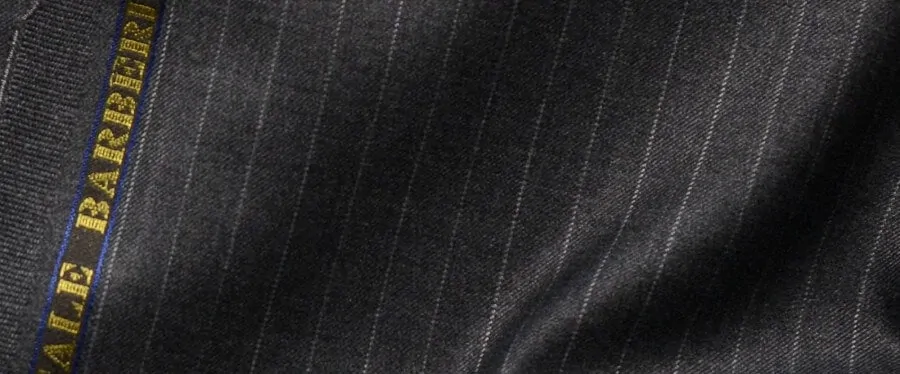
REVENGE – Top Quality Worsteds With A Twist
The Revenge is a step up from the Perennial collection both in quality and price. Although the sheer SUPER 150’s number might not sound overly impressive, the secret to REVENGE is in the yarn. It all starts with a small selection of carefully bred Australian sheep, which produce just about 11,000 bales a season, most of which are bought by Vitale Barberis Canonico. Then this wool is spun into 2-ply yarns that are used for warp and weft, which is something other mills don’t offer. The advantage is four-fold: it produces a more uniform, resistant and softer yarn with better depth of color due to the use of two different colors in the yarn itself. It is one of the finest suitings you can buy.
- SUPER 150’s with 2-ply Warp & Weft
- Softer yet harder wearing than PERENNIAL fabrics
- Exceptional depth of color
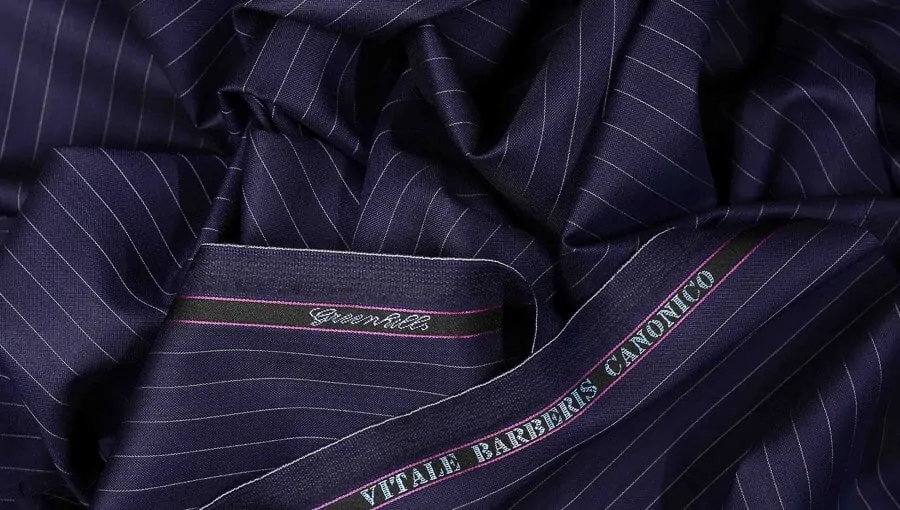
GREENHILLS – The Finest Range Of Worsteds
GREENHILLS represents the pinnacle of fabrics VBC has to offer today. It is named after the company owned Greenhills farm in Mudgee, New South Wales, Australia where climate and soil allow breeding of the very best sheep on the market. The wool for this range of fabric comes from the Saxon Merino sheep which only yields 6kg of wool per year, just a third the amount regular merino sheep produce. The goal of the GREENHILLS range is to produce a divine fabric with a velvety soft hand, and although it could be spun finer than Super 160’s, Vitale Barberis Canonico decided not to do so to preserve the quality of the final product.
- Made of tight crimping wool of Saxon Merino Sheep – the absolute best of the best
- Super 160’s – the finest quality VBC offers today
Where To Buy Vitale Barberis Canonico Fabric?
The PERENNIAL range of fabrics is used in many off the rack, made-to-measure and bespoke suits today. It’s not always advertised as such, but it pays to ask the seller or manufacturer about it. Whenever you see the Perennial label or the VBC logo, you can rest assured that you get a quality product.
The REVENGE is harder to come by, and the GREENHILLS is even rarer.
In case you want to buy your own fabric, the Bolognese fabric store Draper’s sells VBC fabrics directly to consumers in their online shop. What you can see online is just a selection, and you can call in if you are looking for something specific.
At the same time, you should be able to buy all of their fabrics via the bespoke tailor of your choice.
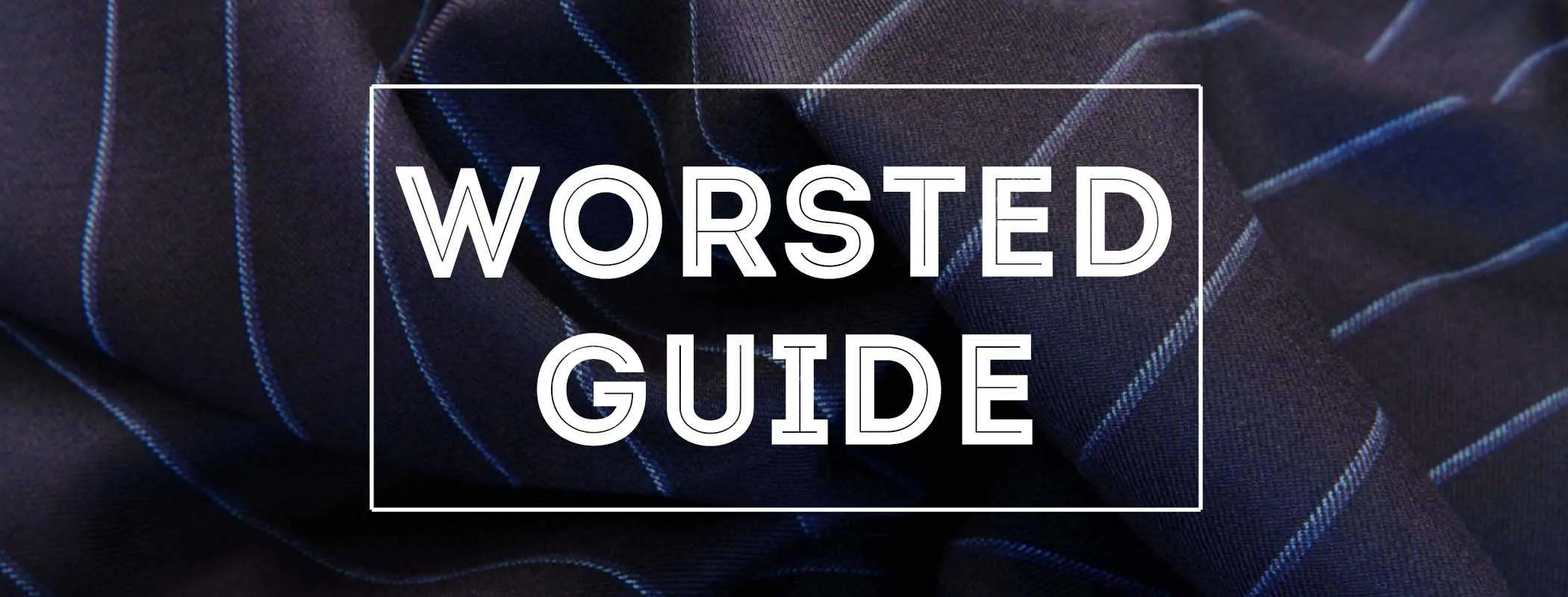
You wrote that the word “Super” can “…only be used to describe fabrics made from pure new wool…”, but I’ve seen this distinction on cotton dress shirts. Are they using a different measurement, or is this just a marketing tactic?
It’s not a law, but if you want to stick with the IWTO you cannot label it that way. As I mentioned, only quality manufacturers abide by that. Shirt fabric weavers are generally very different from wool fabric weavers.
A well explained article from a highly respected name in Worldwide worsted fabric production. Having been involved in the Yorkshire Wool Weaving Industry for almost 30 years it is worth pointing out that there are many poor imitations of VBC worsted fabrics and those of other illustrious Italian and British mills which are made in the Far East and sold as something they are not. Always use a trusted merchant and ask for as much verification as possible in order that the forgers do not profit.
Dear Raphael,
Here in Australia wool is the thing ; for 200years now we have been supplying fleece to the world from our magnificent breed of merino sheep .
As a young man I worked around the sheep farms ( called stations ) . My brother went on to become a wool classer .
I can remember watching the classers grade the fleece can were looking for staples to be around 18 microns to fall into the selection of ” Super Fine ” . The animals themselves were amazing how they could withstand the harsh elements and produce such luxury for people to wear .
This wool was supplies to such Houses as Zegna , Dormeiul and Scabal as well as English Mills like Holland and Sherry .
I love wool and the animals that produce it . I fortunately do not need to wear suits and the like on a daily basis but that does not mean I don’t own them .
Good article again . Perhaps sometime in the future you could discuss Mohair . Australian wool is blended into this stylish fabric to great effect .
Best Wishes
Mark
Mohair is coming Mike!
Sven,
Could you also look into doing a possible article on colours such as khaki and black. When to wear, what to avoid, how to wear, you know the drill.
MG
Maybe…
For the last few years I’ve been buying suits, every store I’ve been to has been pushing Italian wool down my throat, it’s a shame because I live in Australia and it’s almost as if the stores don’t know the quality of our own Merino wool. This was a great guide to read, very informing and quite interesting as well.
Dear Zachary ,
Italian wool in all likelihood is the salesperson gibberish to put you on the hook and get the sale .
On the Southern Highlands of NSW are sheep stations that are owned by Italian Houses growing Merino purely to be milled and them to be called Italian Wool .
The Italians have been for decades superb designers of wool suitings and there Tailors and Cutter are absolute artisans .
May I suggest that it could perhaps be time you may consider finding yourself a tailor and having something made exclusively for your good self .
I live in Sydney and for the last 40years have had suits made to luxurious perfection . Give it a try , do it once and you will never buy off the hook again .
Most suits that brag to be Italian are being made now in places live China India and Turkey
Good Luck fellow Aussie
The wool for the Italian fabrics comes most likely from Australia or New Zealand.
Dear Raphael,
In a short answer yes . The finest wool around is off the backs from Merino ; these are from Spain and were ideally adaptable to harsh conditions of Australia . I do not know how strong the Spanish wool industry is now ; the largest suppliers of Superfine wool to the world are Australia and New Zealand . Our largest trading partner is China ; Japan takes a lot also .
There was a time when Australia rode upon the sheeps back .
Not all that far from where I live is a sheep station owned by the Zegna company , pure Merino only . Every fibre grown is for them only.
Regards
Mark
Sven,
Thank you for the insight.
Could please provide further information on VBC worsted Flannels.From the weight 9/10oz I assume it
is a three(3) season cloth.Please share your experience wearing it.
Nik
We did a full guide on flannel as mentioned above. Personally, I prefer the carded flannel over the worsted but if you live in warmer climates you should give it a try. It’s still a soft fabric considering it is a worsted.
Thanks for the great article. I am much more educated and a better consumer reading your articles! Thank you
I’m impressed, I must say. Truly rarely do I experience a website that’s both educative and entertaining, and I would like to let you know, you’ve
hit the nail on the head.